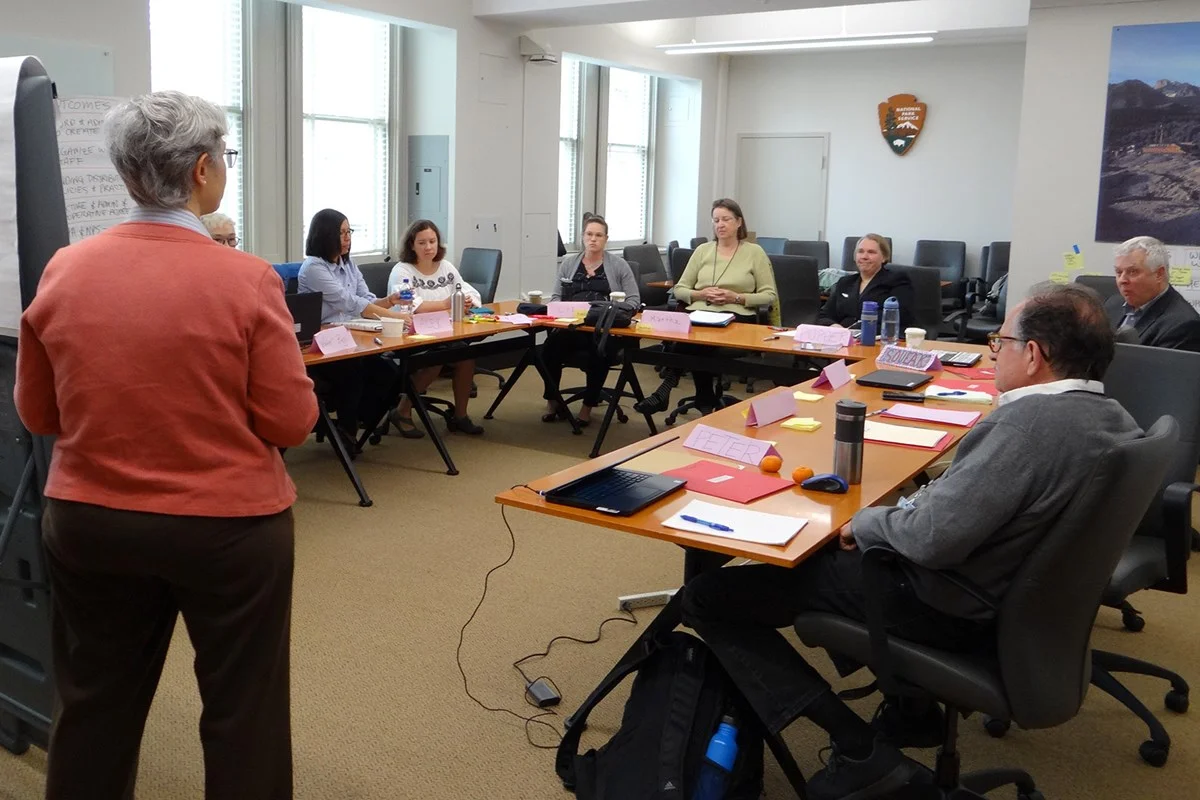Our most popular recent articles dig into what it really means to build a city incrementally to be strong and resilient, including how to create great public spaces, and how to get the mix of neighborhoods businesses you want—without subsidy.
Read MoreWe use the phrase “traditional development pattern” in dozens of Strong Towns essays. Here’s your one-stop-shop explainer article as to what that means.
Read MoreFor decades, many city leaders have thought the only way to end blight was to tear down the eyesores and start fresh. Mobile, Alabama had another idea.
Read MoreThe latest issue of the National Association of Realtors biannual magazine, On Common Ground, is devoted to the financial implications of growth and land-use decisions. And Strong Towns thinking features front and center.
Read MoreEd Morrison—author of Strategic Doing: Ten Skills for Agile Leadership—shares how city leaders can grow their economies by fostering collaboration on a local level, including how to find existing assets in your community, how to encourage existing organizations to focus on a shared goal, and how to incrementally pursue that goal.
Read MoreIncrementalism is not an end in itself. It’s not about stubborn insistence on some sort of small-is-beautiful aesthetic for its own sake. Incremental development is a practical means to the end of resilient, financially sound places.
Read MoreNo name better symbolizes idyllic 1950s suburbia than Levittown. How these massive, master-planned communities—the epitome of America’s suburban experiment—have fared over 70 years tells a less rosy story.
Read MoreWhen property near water holds a higher value than landlocked properties, we call it the “lake effect.” How can this be used to build a stronger, healthier community?
Read MoreScott Ford, former Director of Community Investment for South Bend, Indiana, knows a thing or two about how to turn around a declining place’s fortunes. He shares some key insights with us.
Read MoreSome YIMBYs don’t like Strong Towns and claim we are anti-development NIMBY. Yet, NIMBYs hate us because we insist neighborhood evolve, adapt, and change. What’s going on here?
Read MoreWe’re on a staff retreat to plan for the rest of 2019—and it’s going to be the most amazing year yet for the Strong Towns movement. We’ll be back with new articles and podcasts starting Monday the 10th.
Read MorePaul Fast—Principal Architect at HCMA, a Canadian architecture and design firm—discusses its More Awesome Now project and how you can revive neglected alleyways in your own neighborhood, including how to assess the needs of the neighborhood, how to measure the success of the project, and how to consider all members of the community in its design.
Read MoreFear of drastic change drives many people’s reservations about policies to reduce car-dependence, like eliminating parking minimums. The reality is that we can make a lot of incremental steps to make cars a bit less necessary, less of the time—and the differences between existing places on this front can provide a template.
Read MoreWe tend to talk about neighborhoods in a static way: if they’re not rapidly, visibly transforming, we assume they’re not changing at all. A look at the data provides a helpful reminder that the places we live are actually changing all the time.
Read MoreIn most of North America, we’ve created a world where the poor and rich alike have to pay a very expensive ante—owning a car—just to participate in society. Will autonomous vehicles bring about a fairer world, or exacerbate these inequalities?
Read MoreInstead of subsidizing or regulating our way to the finished state we think we want in our neighborhoods, there s a much more powerful—and achievable—path we can take.
Read MoreWho is an expert in how to build and sustain a strong place? Who has the solutions? Our top articles of the past couple weeks got at the crux of this question—and at why we’re building a mass movement instead of focusing on changing a few policy makers’ minds.
Read MoreEvery time it seems like our housing crisis is going to bring everything crashing down, banks inject a dose of antigravity. How long can it go on?
Read MoreWhen is it appropriate for a local government to take on debt? And other common questions we’ve answered for you—new this week in the Strong Towns Knowledge Base!
Read MoreTrying to navigate opaque bureaucracies, just to get permission to build something that used to be legal everywhere, is like eating Jell-O with chopsticks: tedious and unsatisfying. No wonder people find pragmatic work-arounds instead.
Read More



















